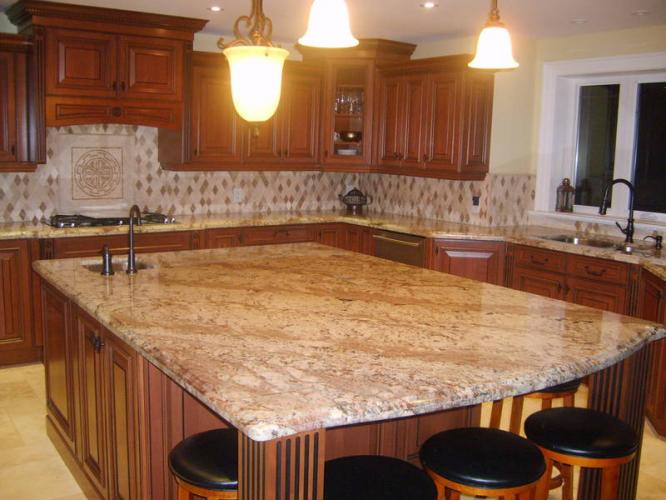During a visit to Eco6Design in Half Moon Bay, California, I was drooling over all the fabulous “eco” options for countertops. Serious eye candy! Vetrazzo, Fireclay Tile, Stone Age, IceStone, Fuez. I was itching to go home, rip out my pale-avocado-tile-with-black-grout counters and start afresh. After all, at 30-plus years old, they’re beyond dated, they’re scratched and chipped, and the grout is so eroded that we have a well-developed riparian system when we sluice down the counters after cooking.
And then, in the quiet of the next morning, before other humans in my household had awoken, my mind drifted back and stalled on the issue that has long frustrated me about countertops; to wit, no matter what they’re made of, they’re inherently non-green inasmuch as they are custom, adhered in place, and worse – they fasten cabinets to walls at the backsplash.
Just How Ungreen Are Countertops?
Stewart Brand, in his deservedly famous book How Buildings Learn, points out that the materials in a building that are least enduring – whether due to wear, changing technology, or changing fashion – should be most accessible and easy to swap out for new. It follows then that those items also should be those in which we invest the least: money, energy, and resources.
With rare exceptions, countertops score horribly on all counts:
1. They are appallingly expensive. I came home with a price chart for these wonderful counter options, and the low end is around $30/sq.ft. So new counters for my midsize kitchen would cost upwards of $500 — not including the labor to remove the old and install the new. Call it $1,500. Ouch! Not this year …
2. The embodied energy of countertops is typically very high. Most counter materials contain cement, are fired at high temperatures, contain a high percentage of synthetic materials, and/or may travel long distances (probably by truck) to get to their final destination. Obviously, the trade-off is durability. Brand’s admonishments notwithstanding, nobody wants flimsy, cheesy countertops that start to look battered within months. Even so, it’s hard to justify an astronomically high energy investment in materials that are highly subject to the vagaries of fashion and taste – all the more so for a speculative builder, whose choice may be rejected by a buyer and promptly replaced.
3. The investment may be disproportionate to the countertop’s longevity. Countertops may not require a lot of raw material in their manufacture, but their high cost is at least a partial reflection of all the resources — materials, labor, and energy — that go into making them.









I know many people are looking for a perfect countertop for their kitchen, including myself. To me a perfect countertop contains no chemicals. It does not easily stain or scratch. It can stand heat with no maintenance, low embodied energy. It can be recycled after end of life cycle. Does anyone know where to find it?